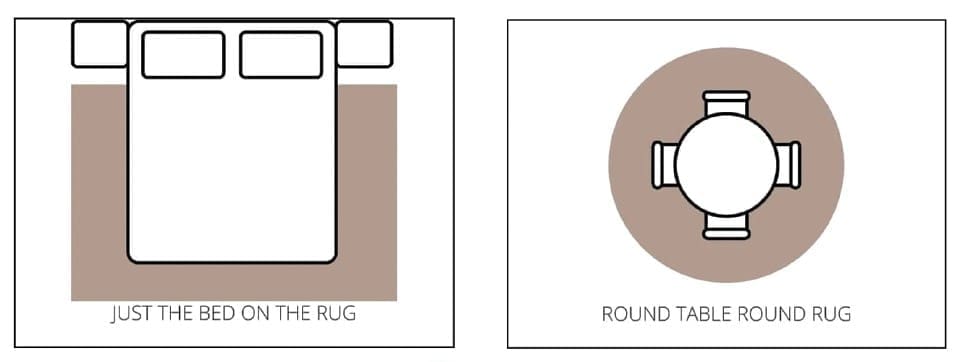By Kim Schneider
Yes, you read that right. There are so many things to consider when selecting the perfect rug for your space. Choosing the right style, size, shape and material for your rug will create a statement. Selecting the wrong rug is too easy with so many choices available. Below are a few tips to help guide YOU in purchasing the perfect rug.
Style:
When selecting a patterned rug, consider how the pattern will play with your furniture. If the rug design has a focal point, make sure it doesn’t get covered up with heavy furniture. If the rug has a repetitive pattern placement of your furniture won’t cause you to visually miss the design.
Size & Shape:
Bigger is Better, but NOT too big! A few inches can make a big difference between the rug pulling the room together or making it feel disconnected. The size of your room and furniture layout will determine which rug size and shape will work best for your space. Pro Tip: Typically, round rugs work great in a dining room under a round dining table and rectangular rugs work best in a square or rectangular room.

Living Room – There are several layouts you can use, but my favorite is allowing all of the furniture legs to rest on the rug with a minimum of at least 6” of the rug extending past the furniture. This layout, requires a large rug and is the best choice for anchoring an open-space concept with floating furniture.
Dining Room – Again, I recommend allowing all of the furniture legs to rest on the rug. This layout looks best and is ideal for safety purposes. The rug in this room should extend at least 24” but not more than 36” beyond all ends of the table. The 24”-36” allows for the chair to remain on the rug when pushed back. Pro Tip: Remember to include the size of your table when the extensions/leaves are in use.
Bedroom – Your bed should be both the focal point of the room and the base for your rug. My favorite is the same as above, all furniture legs on the rug. This includes your nightstands and bench at the foot of the bed, but does not include the dressers or other pieces of furniture in the bedroom. The rug should extend a minimum of 18”-24” past the edge of your bed/nightstand. If space allows, avoid having the rug flowing into the main walking area(s).
If you want to see more of your flooring, use a smaller rug, allowing only 2/3 of the bed to sit on the rug. This option still needs 18”-24” of the rug to extend on each side and beyond the foot of the bed. Pro Tip: An 8’x10’ rug works best for a queen bed and a 9’x12’ for a king.
Foyer/Entryway – It’s best to let the shape of this space determine the choice of a round, rectangular or runner. The width of your front door can be used as a baseline for how wide your rug should be. Pro Tip: Make sure the pile of the rug isn’t to high so the front door can open properly. Also, don’t forget your rug pad. It will help prevent your rug from sliding around.
Material:
There is a broad selection of area rugs made from wool, synthetic, sisal and grass to name a few. Consider which material is right for your lifestyle based on the below.
Wool – A wool rug combines comfort and durability, but they also absorb humidity and can fade in the sun.
Synthetic – A synthetic rug offers a large variety of colors and patterns. They stand up to heavy traffic and are often pre-treated to avoid stains and are more affordable.
Sisal – Sisal rugs are extremely durable and made of natural fibers. They work well in the high traffic areas of your home but they are stiff compared to wool rugs.
Grass – A grass rug is natural and environmentally friendly with no chemicals or additives. They add a sustainable feel and are easily customizable.
Rugs can be expensive, but they’re worth it. It’s art for your floor! Too many choices? Coastal Design by Kim is here to help YOU solve the puzzle. Contact us at (850) 904-6622 to schedule your appointment. 981 Highway 98 E, Ste. #3-346 | Destin 32541 | kim@coastaldesignbykim.com





























































